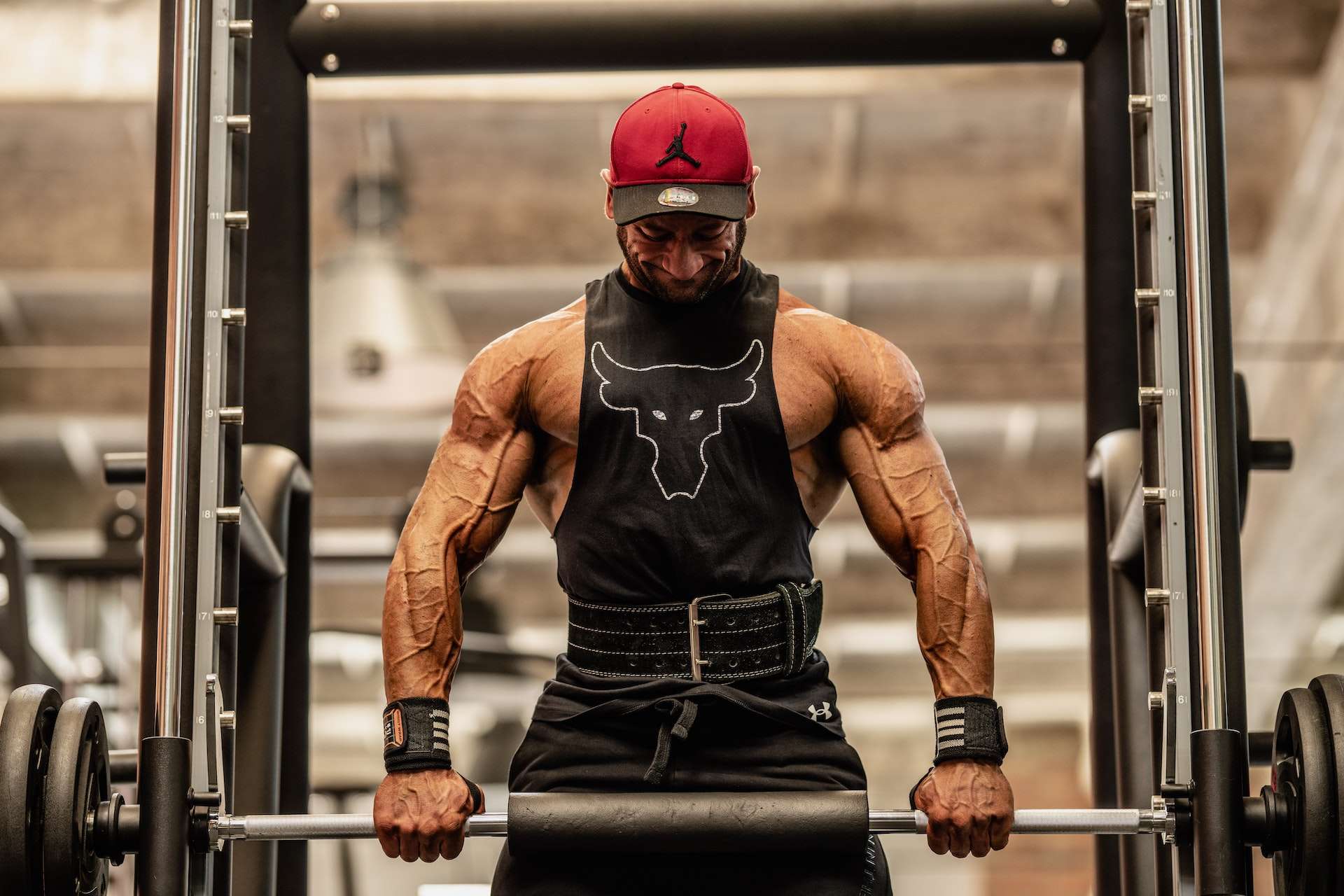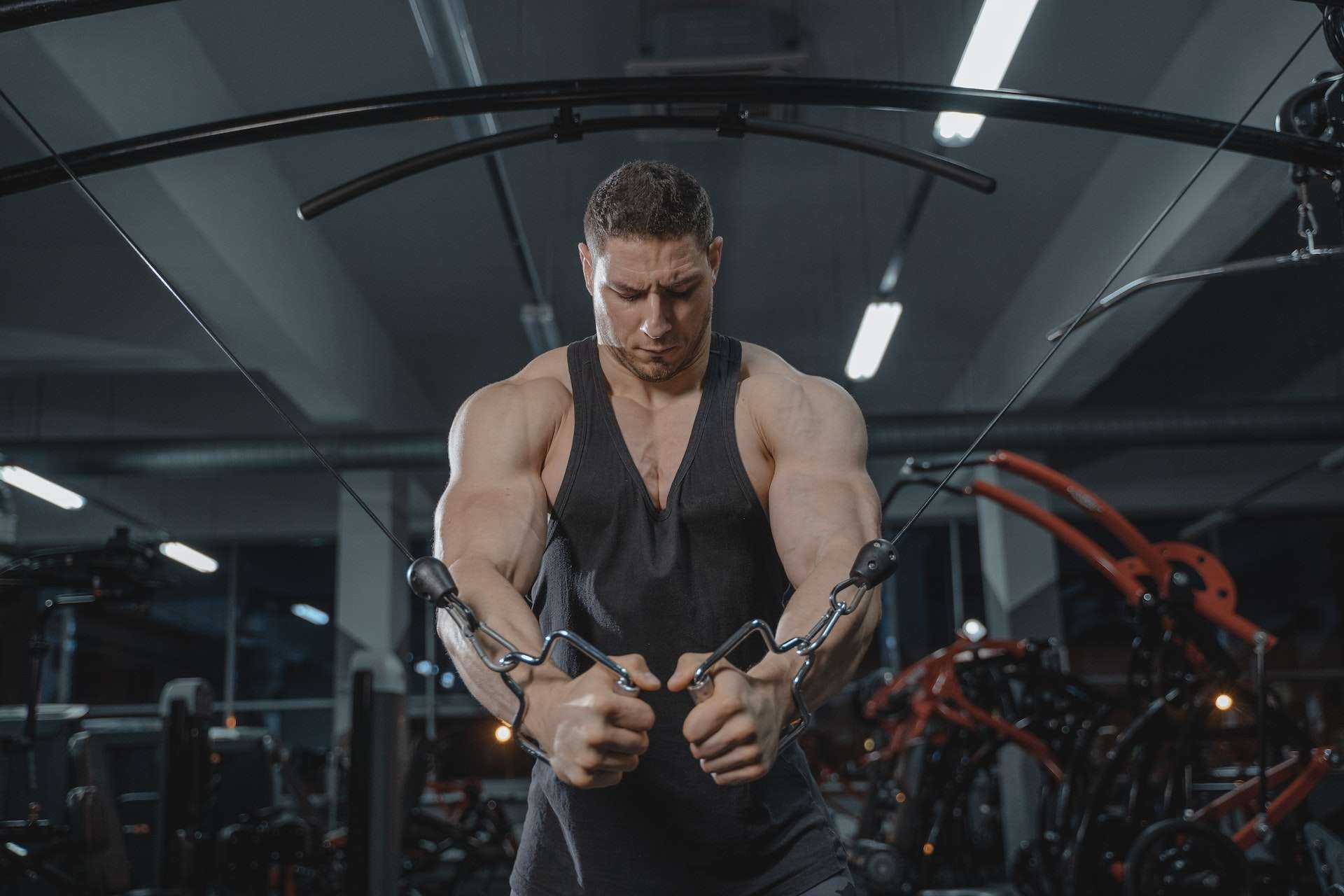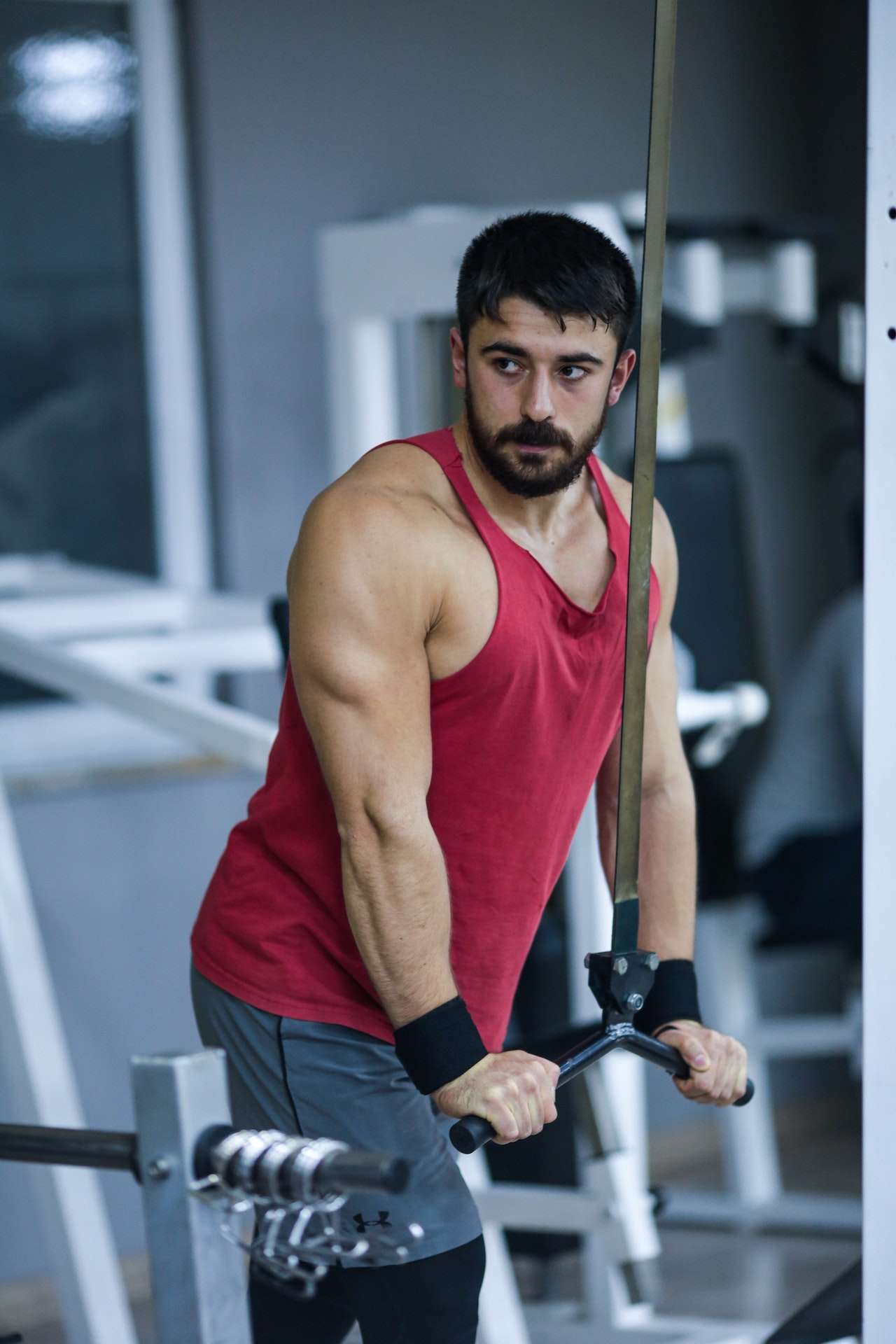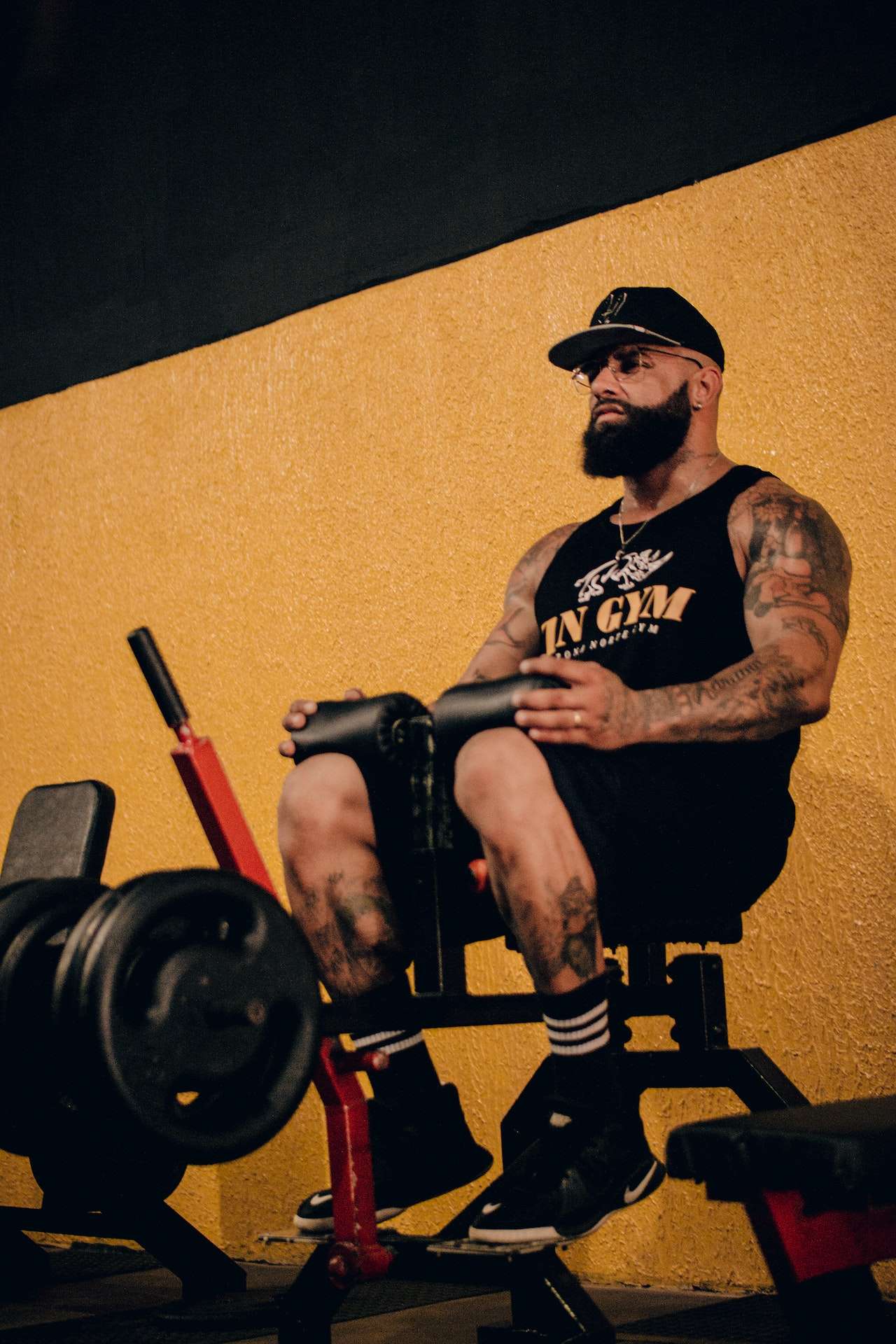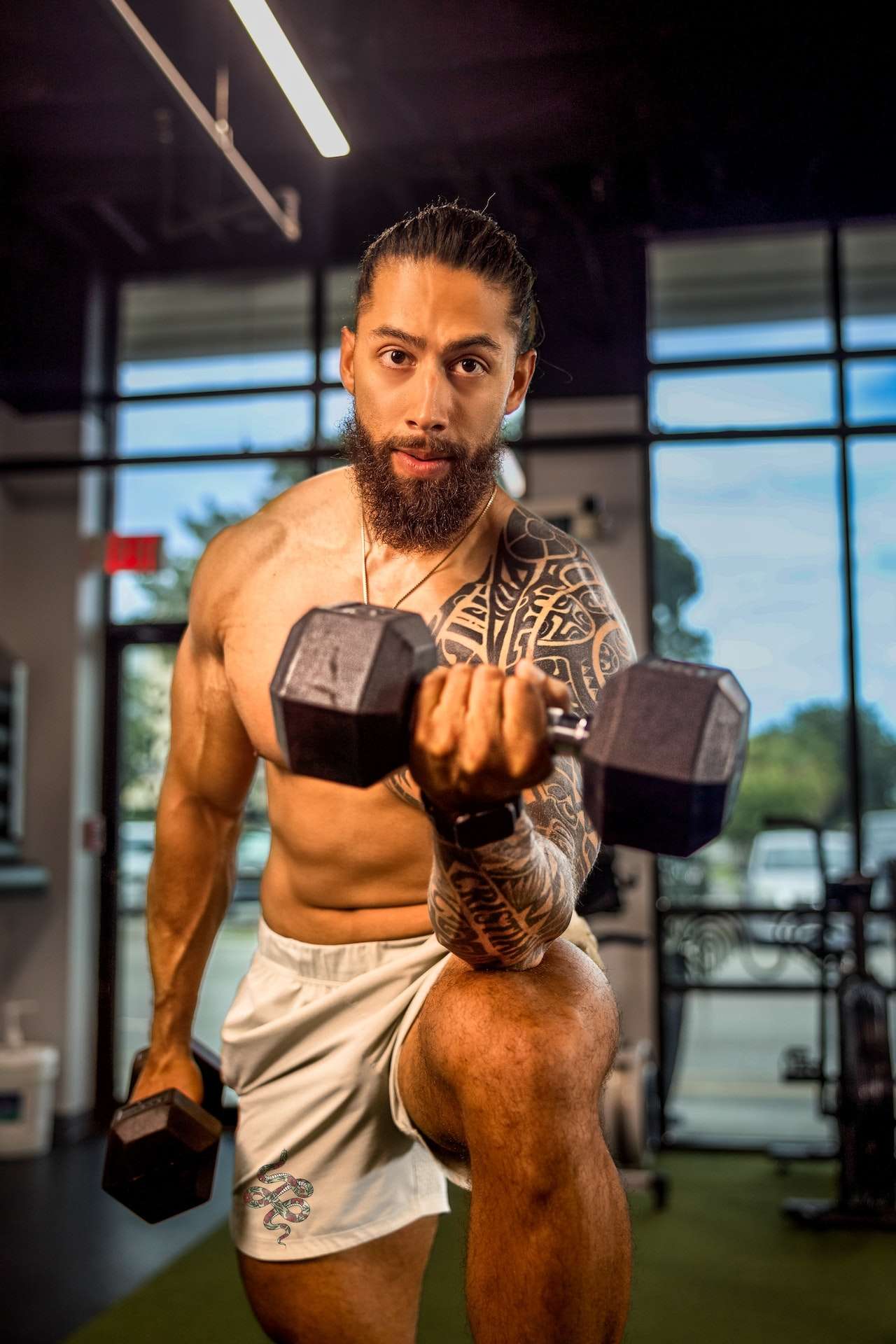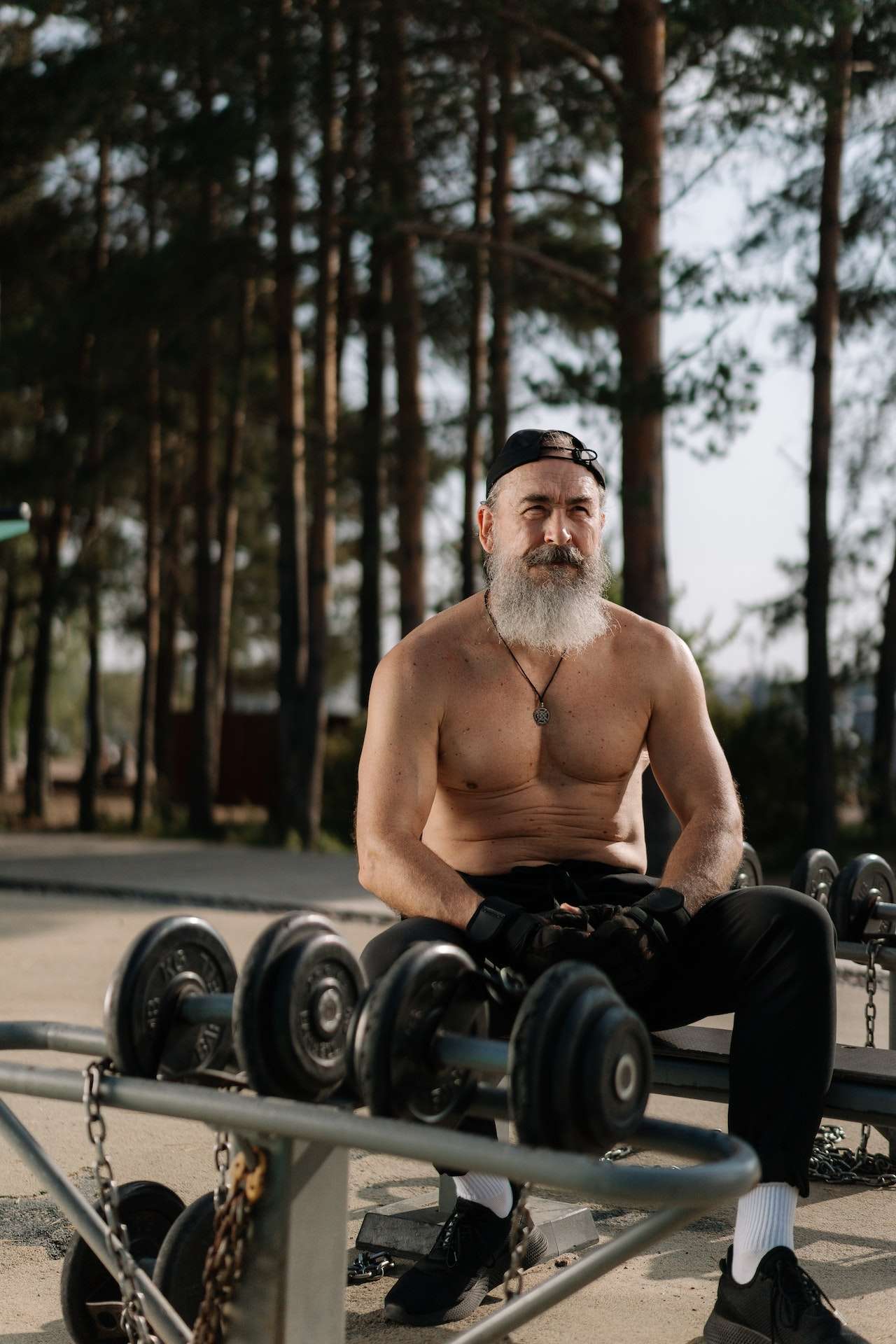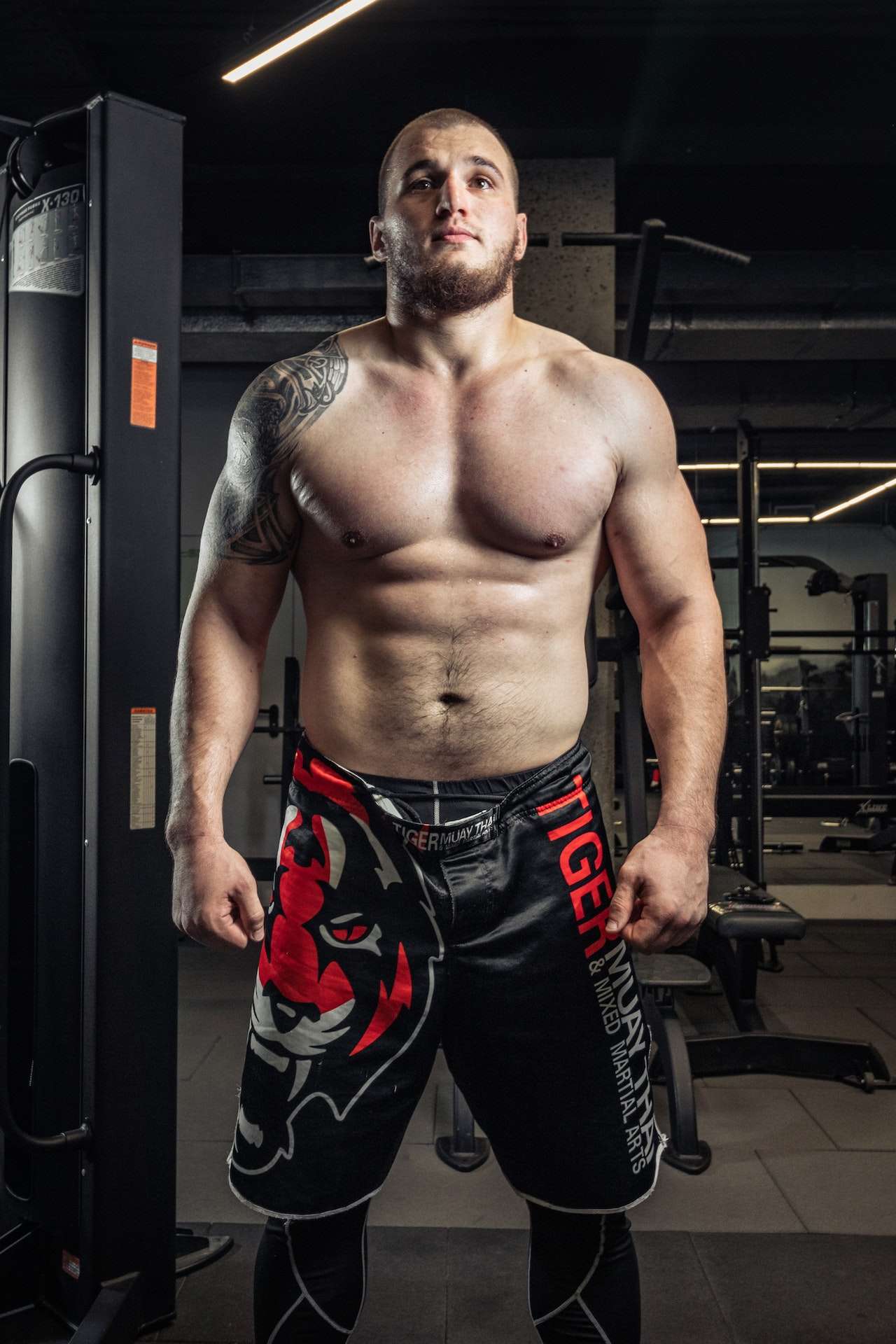|
Have you ever admired a bodybuilder’s physique and wondered how they achieved their muscular form? Or have you ever tried to sculpt your own body for aesthetic purposes? If so, you may have noticed a distinct difference between bodybuilding for aesthetics and building strength. In this article, I will explain the differences between each goal and provide tips on achieving the look you desire. As someone who has spent many hours in the gym striving towards my fitness goals, I can relate to the curiosity surrounding bodybuilding for aesthetics. With all the options available regarding fitness regimes, it can be challenging to know which one is best suited for achieving a particular look or level of strength. The idea that muscle building for aesthetics requires different approaches than building strength can be counterintuitive initially. However, understanding the nuances of both methods is essential if you want to progress in your fitness journey. After all, knowledge is power! In this article, we’ll explore why these two goals require different approaches and some tips to help make your journey more accessible and rewarding.
Table of Contents
show
The Purpose Of Bodybuilding For AestheticsThere are two main approaches regarding bodybuilding: bodybuilding for aesthetics and bodybuilding for strength. The purpose of bodybuilding for aesthetics is to create a balanced and symmetrical physique that looks aesthetically pleasing. This approach focuses on developing muscle tone and definition while maintaining a lean body. The training approach for bodybuilding for aesthetics involves focusing on fewer exercises with higher reps and shorter rest periods to keep the muscles under constant tension. It also incorporates isolation exercises to target specific body areas, such as bicep curls or shoulder presses. The nutritional requirements for this bodybuilding type involve eating clean and ensuring adequate protein intake to promote muscle growth.
Cardio is also important to burn fat but should be done in moderation, as too much can lead to muscle loss. Additionally, recovery plays a vital role in this bodybuilding type; good rest days allow the muscles to heal, grow, and repair themselves. Finally, genetics play an essential role in achieving the desired aesthetic results; some people may have a genetic advantage when building muscle or burning fat. In today’s world of social media, many people are drawn towards aesthetics-based bodybuilding because they want their physiques to look perfect on camera or in pictures. Aesthetics bodybuilding means sculpting one’s physique by lifting weights, emphasizing symmetry and proportionality while maintaining a leaner figure overall. It is truly an art form that requires dedication and commitment; those who practice it often consider themselves “bodybuilders” who strive for perfection through rigorous training and nutrition protocols, proper recovery techniques, and supplementation regimens. The Purpose Of Bodybuilding For StrengthThe purpose of bodybuilding for strength can be likened to a sculptor chipping away at a block of marble. The goal is to shape the physique into an impressive, muscular form while increasing strength and power. Doing this requires a specialized approach focusing on training, nutrition, recovery, and genetics to achieve the desired results. Training Approach for Bodybuilding for Strength:•Focus on compound movements such as squats, deadlifts, presses, and pulls •Train with heavy weights with low reps (3-5) and high sets (4-6) •Vary the exercises often to avoid plateaus •Include plyometric movements (burpees, jump squats, etc.) •Perform drop sets when necessary Nutritional Requirements for Bodybuilding for Strength:•Consume 1 gram of protein per pound of bodyweight daily •Eat complex carbohydrates such as oatmeal and brown rice throughout the day •Include healthy fats like olive oil in your diet •Stay hydrated by drinking at least 2 liters of water daily •Cut out all processed sugars and refined grains from your diet The role of cardio in bodybuilding for strength is a controversial topic. Some believe it should be avoided altogether, while others suggest including short HIIT workouts. Ultimately, it comes down to personal preference; if you choose to include cardio in your program, ensure that you don’t overdo it so that you don’t burn any hard-earned muscle mass or interfere with your recovery. The importance of healing must be recognized when building strength and size; this includes adequate rest days between workouts and getting enough sleep every night. Genetics also play an essential role in how much progress you can make through bodybuilding for strength; some people may have better-starting points than others due to their natural bone structure or muscle fiber makeup. Lastly, a mental aspect involves bodybuilding for strength, which consists of staying consistent with your program even when things get tough and pushing yourself out of your comfort zone when needed. With these factors considered, one can begin to craft an effective program tailored to building strength through bodybuilding. The Training Approach For Bodybuilding For AestheticsRegarding bodybuilding for aesthetics, there are several key differences from strength training. Firstly, the role of cardio is much more emphasized in bodybuilding for aesthetics than when bodybuilding is for strength. Cardio helps burn fat and build muscle definition, which is both essential components of a bodybuilder’s physique. Additionally, recovery plays a vital role in achieving aesthetic goals through bodybuilding. Because the goal is to gain muscle definition rather than sheer size, putting extra emphasis on rest can be beneficial in helping to develop a fit physique that looks good.
Genetics also plays an essential role in bodybuilding for aesthetics versus building strength. Some people may have a genetic advantage towards looking leaner and more muscular than others, which can significantly impact their ability to achieve their aesthetic goals through bodybuilding. It’s also important to consider the mental aspect of bodybuilding for aesthetics. While building muscle size can be motivating and rewarding, having a defined physique with visible muscles takes dedication and perseverance – something that cannot be overlooked when setting out on your journey toward achieving your aesthetic goals through bodybuilding. TIP: For those looking to learn more about bodybuilding for aesthetics, there are many great resources available such as The Bodybuilding Bible. The Powerlifting & Bodybuilding Hybrid Workout Plan For Strength & Size which provide detailed information about how to create a balanced program that will benefit you both aesthetically and physically. The Training Approach For Bodybuilding For StrengthIf you’re looking to get into bodybuilding, it’s essential to understand the difference between bodybuilding for aesthetics and bodybuilding for strength. Training for bodybuilding for power is much more intense and complex than training for aesthetics. It requires time, energy, and knowledge of the best exercises and activities to maximize your strength gains. Strength training vs. bodybuilding physique means focusing on heavy compound lifts like squats and deadlifts rather than isolation movements like bicep curls or lateral raises. This training will help build muscle mass, increase strength, and improve joint health. Additionally, exercises like plyometrics are often used to increase speed and explosiveness in athletes who want to see results in their sport-specific performance abilities. For those who want a simple and practical plan to put on mass without doing too much research, plenty of online resources can help guide them through the process. From using supersets to increasing rest periods between sets, there are many strategies that beginners can use to ensure they remain safe while maximizing their progress toward their goals. Nutritional requirements play an essential role in any form of bodybuilding – both aesthetically driven or strength-driven – so it’s necessary to consider this aspect when creating a workout program tailored to your needs. The Nutritional Requirements For Bodybuilding For AestheticsNutrition is the critical factor in any bodybuilding program, and it is especially true when you are looking to build an aesthetically pleasing physique. Whether trying to gain strength or look good, proper nutrition should be a significant part of your bodybuilding program. For example, professional bodybuilders often use a theragun for bodybuilding to reduce muscle soreness after workouts, but they also rely heavily on their diet for maximum results. Regarding aesthetics, the nutritional requirements differ slightly from those for strength building. As with any training, proper nutrition is essential to achieve maximum results. You will need more protein than usual and plenty of healthy carbohydrates and fats.
Additionally, the needs for B vitamins increase proportionally with energy expenditure, so ensure you get enough of them too. Eating regularly throughout the day and drinking plenty of water is also essential – this will help keep your metabolism running smoothly and your muscles adequately nourished. TIP: When creating a meal plan for aesthetic bodybuilding, include plenty of fresh fruits and vegetables daily. Eating these types of natural sources of carbs and nutrients will ensure that your muscles have everything they need to grow bigger and stronger while maintaining a lean physique. Furthermore, remember to supplement with essential vitamins such as Vitamin D3 to maximize your results further. With the right approach to nutrition and supplementation, you can achieve impressive gains in aesthetics and strength! The Nutritional Requirements For Bodybuilding For StrengthBodybuilding for strength has a different purpose and nutritional requirements than bodybuilding for aesthetics. According to the Strength Guys Program, an evidence-based approach to training for strength and hypertrophy, the protein requirement for athletes is more than double the recommended dietary allowance (RDA). This means that bodybuilders training for strength must ensure they consume enough protein in their diets to build muscle mass. In addition to adapting their nutrition, those looking to build strength should also focus on creating a specific training program that targets muscles with greater intensity than when working out for aesthetics. For example, The Training Box recommends performing compound exercises such as squats and deadlifts, which help you target multiple muscle groups. This exercise increases the demand for your muscles and the potential for building strength. Cardio is also an essential part of any bodybuilding program, but its role differs depending on whether you focus on aesthetics or strength. When working out for aesthetics, cardio helps burn fat and can be used to shape or tone your body. However, when building muscle mass and increasing strength, it’s important not to overdo cardio as it can lead to fatigue, reducing your ability to lift heavy weights. Recovery is key if you want results from your workouts, so leave time between sessions for rest and recovery. These four components – nutrition, training program, cardio, and recovery – are all essential to bodybuilding for strength. Ensuring these elements are addressed each week appropriately will increase your chances of achieving desired results from your workouts. As we move onto the role of cardio in bodybuilding for aesthetics, we will gain a deeper understanding of how best to approach our fitness goals. The Role Of Cardio In Bodybuilding For AestheticsWhen it comes to bodybuilding for aesthetics, cardio plays an important role. Cardio helps you burn calories to stay lean and achieve the desired look. It also aids muscle definition and gives your muscles a more toned appearance. But it’s important to note that there’s a difference between how much cardio is needed for strength and bodybuilding for aesthetics. Regarding bodybuilding for aesthetics, cardio should be used sparingly because too much can result in muscle loss. Instead, focus on diet, genetics, measurements, and other tips to build your desired physique. Eating the right food and ensuring a balanced caloric intake is critical to achieving your desired look.
Intermittent fasting is also great for bodybuilding and aesthetics, as it helps you stay lean while gaining muscle mass. And don’t forget about the power belt – wearing one during workouts can help increase core strength while helping you achieve better results with less effort! Cardio provides many benefits when done correctly, but considering whether or not it’s necessary for bodybuilding success depends on what type of goal you’re trying to achieve. Understanding the difference between bodybuilding for strength and bodybuilding for aesthetics will help you decide which exercise will yield the best results. The Role Of Cardio In Bodybuilding For StrengthWhen it comes to bodybuilding for strength, cardio can play an important role. For starters, it helps build muscle endurance and aerobic capacity, which is essential for strength athletes. Plus, it helps reduce the risk of injuries and overtraining. Even though cardio is not necessary for getting more robust, it’s still a valuable part of any strength-based training program. The Strength Guys Free Program, The Strength Guys Program Reddit, The Strength Guys Review, and The Training Room Boston – are all examples of programs that combine bodybuilding and strength training to maximize results. These types of programs usually involve intense weightlifting and moderate-to-high-intensity cardio sessions. This combination can help improve muscle size and develop muscular endurance and aerobic capacity. Nutrition is also essential when it comes to bodybuilding for strength. Nutritional requirements for building muscle include adequate protein, carbohydrates, and fats to promote muscle growth and repair. Eating enough calories is also essential to fuel your workouts and ensure proper recovery afterward. Furthermore, getting enough rest between exercises is necessary to prevent overtraining and injury. Bodybuilding offers many benefits, such as improved physical appearance, muscle mass, strength, health, and confidence. While there are similarities between bodybuilding for aesthetics and bodybuilding for power – such as nutrition requirements – there are also differences that should be considered when choosing the best approach for you. With the right combination of exercises, nutrition, and recovery strategies tailored to your aesthetic or performance-based goals, you will soon achieve the physique you desire! The Importance Of Recovery For Bodybuilding For AestheticsRegarding bodybuilding, the importance of recovery cannot be overstated. Recovery is vital in achieving the aesthetic physique that someone is aiming for. Many people overlook this fact and instead focus on the purpose of creatine or the role of carbs in building muscle. But to achieve their desired aesthetic goals, taking time off after a workout is just as important as any other training element. One of the best ways to maximize recovery is using weight-lifting belts, which help protect your core muscles and reduce fatigue levels when doing intense exercises. Training for aesthetics suggests that the recommended training method for muscle fitness is periodization, which involves alternating rest periods with periods of hard work. This approach allows you to give your body time to recover from a tough session while still pushing yourself and not losing any progress.
The only bodybuilding supplements you need are those that facilitate recovery—such as protein powder and amino acids—getting enough sleep each night and eating right throughout the day. The importance of cardio in bodybuilding shouldn’t be underestimated either; it helps boost circulation, improve endurance levels, and can even help build lean muscle mass if done correctly. Cardio after lifting should also be considered for optimal results because it helps flush out lactic acid built up in your muscles during strenuous workouts. Knowing how important genetics are in bodybuilding can also have an impact on recovery times; some people may be able to recover faster than others due to inherited traits like large hearts or strong lungs. Recovery plays a significant role in achieving the desired aesthetic look through bodybuilding; without adequate rest and recovery, progress will eventually stall regardless of how well one follows their nutrition plan or how many supplements one takes. We must take breaks between sets and sessions so our bodies can heal properly before tackling more intense workouts. With proper rest and nutrition, anyone can get closer to their ideal aesthetic physique! The Importance Of Recovery For Bodybuilding For StrengthRecovery is an essential part of bodybuilding for strength. It’s often overlooked, but it plays a massive role in the success of any strength athlete program review. Without proper rest and recovery, your muscles can’t rebuild and grow. Think of it like a car; if you don’t get regular oil changes, eventually, it won’t run! The Strength Guys Reddit recommends that lifters focus on nutrition and rest when trying to build strength. Food is vital – protein is essential for building strength, which helps keep muscles strong and healthy. How many kcal are needed to support the growth of a pound of muscle? That depends on your age, sex, and activity level, but as a general rule of thumb, you should aim for around 15-20 kcal per pound of muscle mass. The Muscle And Strength Pyramid Nutrition Pdf Free can help guide your nutritional choices. On top of nutrition, The Best Bodybuilding Routine For Natural Bodybuilders should also be tailored to include adequate rest time between sets and workouts so that your muscles can recover from each session. Proper rest is essential for optimal performance – The Role Of Hormones In Muscle Hypertrophy shows that hormones like testosterone are necessary for gaining muscle mass. Without enough rest, these hormones cannot be released correctly, and muscle growth will suffer. The Importance Of Recovery After Exercise should be taken seriously; with proper recovery, progress will be made as efficiently as possible, no matter how hard you work or how good your diet is. Planning out adequate recovery periods between training sessions will ensure you can make consistent progress in the gym while avoiding burnout or injury due to overtraining. With these tips in mind, bodybuilders aiming for strength gains can maximize their potential with the proper nutrition and recovery strategies! The Impact Of Genetics On Bodybuilding For AestheticsWhen it comes to bodybuilding for aesthetics, the impact of genetics cannot be understated. You can do everything ‘right’ regarding diet and training but may be spinning your wheels without the right genetics. Genetics play a huge role in how successful you will be at bodybuilding for aesthetics, from muscle shape and size to recovery time and even hormone levels. Certain genetic traits, such as wide clavicles and a narrow waist, are seen as more desirable than others in bodybuilding for aesthetics. These features form what is known as the ‘aesthetics crew’ – a group of individuals with great genetics for bodybuilding and sculpting their bodies into art.
It has been argued that some people have an unfair advantage over others in this regard due to their natural genetic makeup. So how vital is genetics in building muscle? While there are certainly those with naturally gifted traits that make them stand out from the crowd, anyone with exemplary dedication and hard work can still reach impressive results regardless of their starting point. It’s all about understanding your strengths and weaknesses, so you can focus on improving those areas that will make the most significant difference. Do genetics affect bodybuilding? Yes! But don’t underestimate your power either – how much of a role does genetics play in bodybuilding? A significant one, but you will achieve great results if you put in enough effort! Conclusion:The pursuit of bodybuilding for aesthetics or strength is a personal journey. It can be an exciting and rewarding experience that can help to improve physical, mental, and emotional well-being. Ultimately, the key to success is understanding what works best for each individual. By customizing their training and nutrition strategies, understanding their genetics, and allowing adequate time for recovery, aspiring bodybuilders can reach their aesthetic or strength goals. It’s important to remember that bodybuilding isn’t a race; it’s a marathon. Anyone can become their best version with perseverance, dedication, and consistency. So don’t let yourself be weighed down by doubts or fears; take it one step at a time and enjoy the journey. As the old saying goes: “Rome wasn’t built in a day.” Just like Rome, your physique won’t happen overnight; however, with hard work and dedication, you’ll be amazed at what you can achieve. |
